Art As Activism
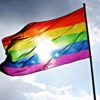
Students will learn about and experience the works of Audre Lorde and James Baldwin and discuss how and why someone might use their passions for activism.

Instructional Resources for California Educators, Students, & Families

Students will learn about and experience the works of Audre Lorde and James Baldwin and discuss how and why someone might use their passions for activism.
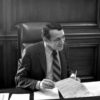
Students will learn about the life and accomplishments of Harvey Milk. Harvey Milk was an American politician who became the first openly gay man to be elected to public office in the United States. Harvey Milk used a simple problem that affected the everyday lives of San Francisco’s residents to gain support from people outside of the LGBTQ community and work on larger issues.

Students will learn about the history of Pride in the U.S. and Brenda Howard, an American bisexual rights activist who originated the idea for a week-long series of events around Pride Day that are now held around the world every June.
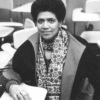
In this lesson, teachers will contextualize the LGBT rights movement by answering the question introduced in the History-Social Science Framework for California Public Schools: “How did various movements for equality build upon one another?” While activists fighting for LGBT rights utilized similar tactics and had some shared goals of those fighting for Civil Rights broadly, LGBT people in racial minority communities faced additional discrimination. Moreover, many fighting for broader Civil Rights did not consider sexual preference or gender identity as apart of their fight. In this lesson, students will explore historical perspectives to determine to what extent the movement for LGBT rights was or was not part of the broader movement for Civil Rights of the 1970s and 1980s. Students will read, annotate and categorize several primary sources to write a short essay describing and supporting their prospective with evidence from the texts.
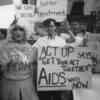
In this lesson, teachers will contextualize the LGBT rights movement by answering the question introduced in the History-Social Science Framework for California Public Schools: “How did various movements for equality build upon one another?” While activists fighting for LGBT rights utilized similar tactics and had some shared goals of those fighting for Civil Rights broadly, LGBT people in racial minority communities faced additional discrimination. Moreover, many fighting for broader Civil Rights did not consider sexual preference or gender identity as apart of their fight. In this lesson, students will explore historical perspectives to determine to what extent the movement for LGBT rights was or was not part of the broader movement for Civil Rights of the 1970s and 1980s. Students will read, annotate and categorize several primary sources to write a short essay describing and supporting their prospective with evidence from the texts.
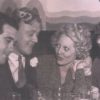
In this lesson, teachers will contextualize the LGBT rights movement by answering the question introduced in the History-Social Science Framework for California Public Schools: “How did various movements for equality build upon one another?” While activists fighting for LGBT rights utilized similar tactics and had some shared goals of those fighting for Civil Rights broadly, LGBT people in racial minority communities faced additional discrimination. Moreover, many fighting for broader Civil Rights did not consider sexual preference or gender identity as apart of their fight. In this lesson, students will explore historical perspectives to determine to what extent the movement for LGBT rights was or was not part of the broader movement for Civil Rights of the 1970s and 1980s. Students will read, annotate and categorize several primary sources to write a short essay describing and supporting their prospective with evidence from the texts.
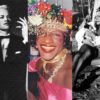
In this lesson, students will learn about transgender and LGBTQ history, the key role of transgender and gender non-conforming women of color in the modern LGBTQ movement, and the Stonewall Inn Riots in June 1969. They will accomplish this by watching and discussing a video about transgender rights and LGBTQ history and learning about the activists Marsha P. Johnson, Sylvia Rivera, Miss Major, and Stormé DeLarverie.

In this lesson plan, students learn about the history of the NAMES Project AIDS Memorial Quilt, discussing its purpose and impact. Students then create paper “quilt panels” for either themselves or loved ones to better understand how the NAMES Project is used to represent and honor people. Afterwards, students collectively reflect on the grieving process. They may engage in an extension activity, where they assemble their panels into a community quilt.
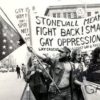
In this lesson, teachers will contextualize the LGBT rights movement by answering the question introduced in the History-Social Science Framework for California Public Schools: “How did various movements for equality build upon one another?” While activists fighting for LGBT rights utilized similar tactics and had some shared goals of those fighting for Civil Rights broadly, LGBT people in racial minority communities faced additional discrimination. Moreover, many fighting for broader Civil Rights did not consider sexual preference or gender identity as apart of their fight. In this lesson, students will explore historical perspectives to determine to what extent the movement for LGBT rights was or was not part of the broader movement for Civil Rights of the 1970s and 1980s. Students will read, annotate and categorize several primary sources to write a short essay describing and supporting their prospective with evidence from the texts.
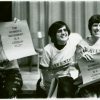
This lesson covers the contributions of the Lavender Menace, or Lesbian Feminist movement, of the 1970s to the general Second Wave Feminist movement, as well as the limitations and downfalls of Lesbian Feminism.